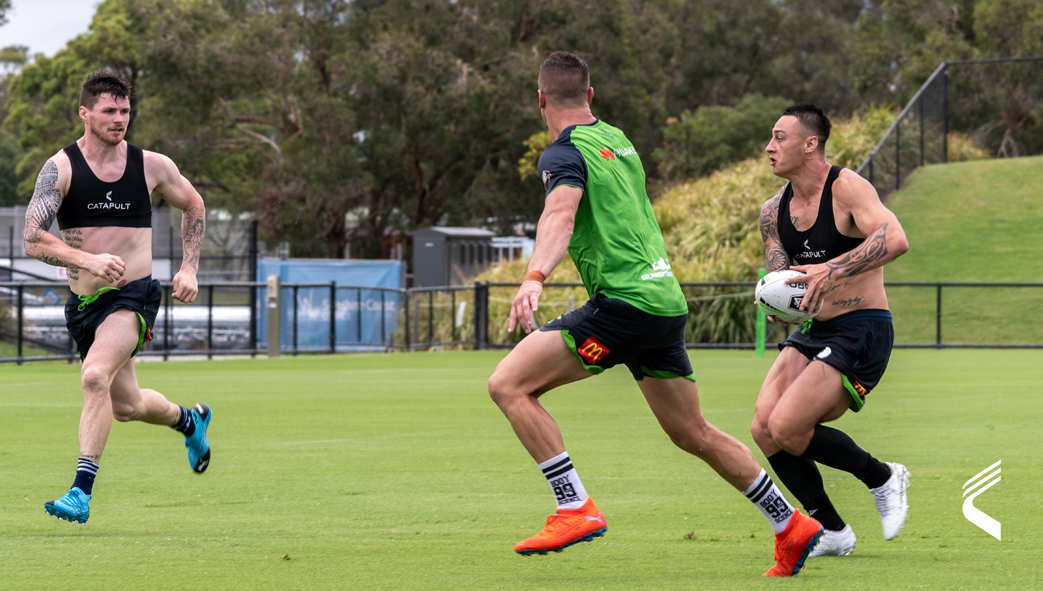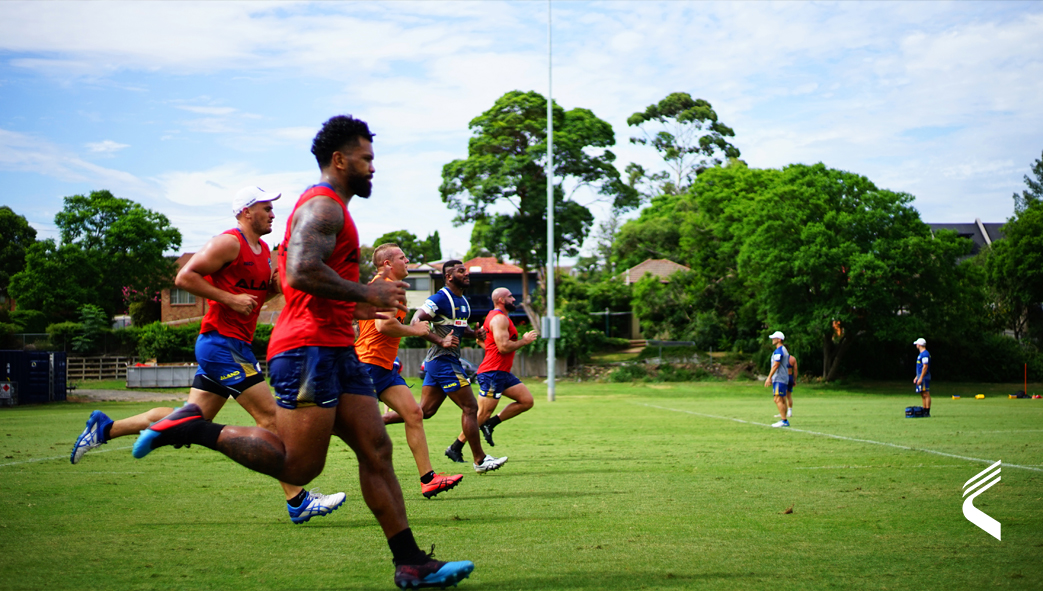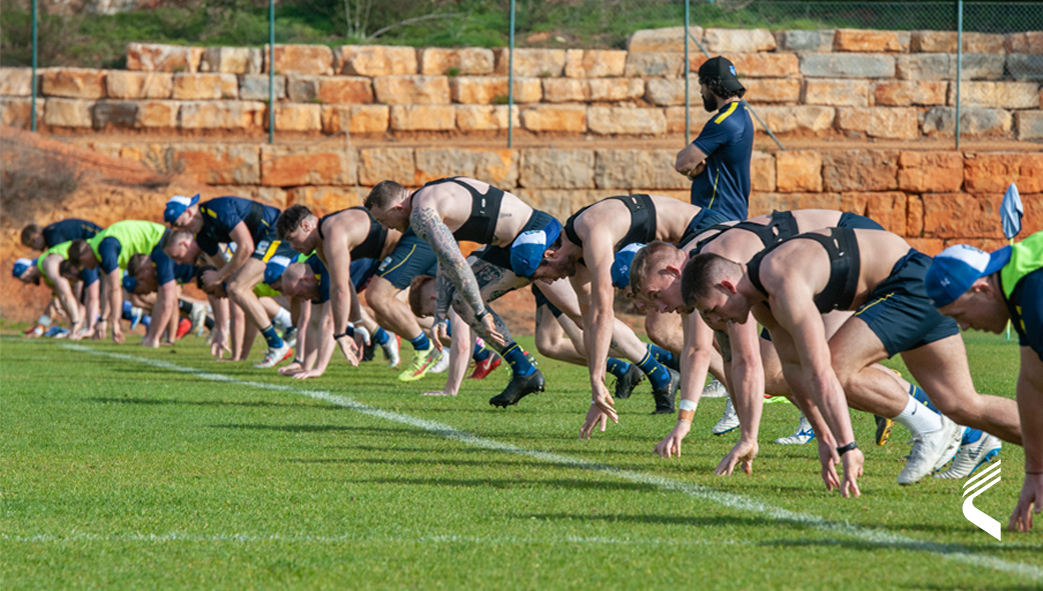The importance of centralised data & multi-team partnerships: NRL case study
League-wide technology partnerships can help sporting governing bodies reduce injuries, improve development pathways and assess the impact of rule changes, a leading technology manager from Australia believes.
We recently caught up with National Rugby League’s (NRL) Football Technology Manager, Johnpaul Caia to discuss the importance of centralised data and multi-team partnership in sports.
Catapult is the league-wide performance partner as a supplier of technology to the 16 NRL Clubs, NRLW Clubs, Australian representative teams, and match officials. This partnership drives foundational and key strategic decision-making around athlete health and performance.
National Rugby League and a Football Technology Manager
The NRL is the governing body of all regulated rugby league in Australia.
“We run a number of competitions, including the State of Origin series, and within that governing body, I oversee the department focused on research, data, sports science, and innovation,” said Caia.
“As a governing body, we collect a number of different assets relating to the game and it’s one of my responsibilities to manage all that data. Whether it’s databases, using that data to tell stories to the press, or sharing that data back with the teams, all of those things tie back to the business aspect of the game and the relationship with the teams.”
This blog discusses:
- Importance of league-wide data
- Why collect data?
- Creation of meaningful insights from data

Importance of league-wide data
A strong relationship with each club’s stakeholders is key.
“The teams and their staff know we’re using the data to best support them and drive the game forward. Since all teams share their data with us, it’s a lot more valid. The league-wide deal gives us a greater confidence in the decisions we make,” said Caia.
“We get GPS data from each round of matches, summary data of total distances, workloads. More interestingly, we also get the 10hz sensor data. Based on that, we can look at the positional data of all players and we can see some really interesting trends related to our sport demands and changes to styles of play.”
From an injury prevention viewpoint, the NRL data team collects data on key match events like tackles, line breaks, and any score involvement.
“With that, we can assess what is happening in the lead-up to head injuries etc. This is especially important for athlete safety and to ensure our game remains a safe sport to play. We can really stay on top of what is happening in the concussion space [which is a] key topic for all global sports,” explained Caia.
Catapult X State of Origin
Why collect data?
“We want to get an understanding of the workloads and demands of the game, and we can obviously use that information to help with the scheduling of our competition structures,” said Caia.
“We also want to understand those moments in a match that may lead to potential injury – the ability to do that over most of the season across different teams means it is much more relevant. We are able to narrow our focus on the health and wellbeing of our athletes. It’s about understanding what the game looks like. What parts of the game or moments in the game are potentially risky for players and athletes.”
In addition to understanding the risks in the sport, having a wealth of data enables Caia to feed information back effectively to the pathways development program.
“Then there’s always that pathway side of things. What is the best way to develop players? What level do they need to be at to compete?” questioned Caia.
“We look at benchmarks across positional groups to know where players need to be better and to inform our talent identification mapping process. We can identify the key skills required to be a top NRL player much earlier, thanks to seeing the other skills and attributes that are important for the game.”

Creation of meaningful insights from data
Using the data to detect change is key for Caia and his team as he can then communicate insights rather than just data.
“Creating norms and making relative comparisons are important but what is really key is that the data gives us that physical workload context against different performance metrics. This allows us to create insights on the data rather than telling the clubs your player ran X. We create a performance picture for the coaches and athletes.”

With these insights, Caia can then assess the structure of the post-regular season period – the finals series (playoffs).
“Now, we can judge how the game transitions more broadly and make decisions based on things like season structure. For example, how much time is needed between the end of the season and the playoffs to objectively understand players’ conditioning and mitigate the risk of overplaying.”
More recently, data has been used to confirm the effectiveness of rule changes and back up the decision-making made by those at the very top of the NRL.
“It’s good to say that some of this is now being used to make informed decisions about player welfare and how do we keep our players fit and healthy on and off the park, which is ultimately what’s going to improve interest from the audience,” mentioned Caia.
“So having the ability to back up those decisions and to give us great confidence with data is critical throughout the whole process. Then, we can also assess if the changes made have had a positive impact on the game. Has the game got faster? More exciting? Yet safer for the players to compete? We can use the data to answer those questions.”
NRL Expands Partnership with Catapult: Embracing the Future of Rugby
The National Rugby League is kicking off an exciting era with its American debut at Allegiant Stadium. This event is more than just a game; it’s a showcase of how far the league has come with the help of Catapult technology.
With the extension of Catapult’s league-wide deal, the NRL is doubling down on its commitment to using advanced data to enhance team strategies and player performance. This technology is not just making waves in Australian stadiums but now, it will also bring its insights to American fans. To read more about how this technology is revolutionising the sport, check out our detailed blog post here.